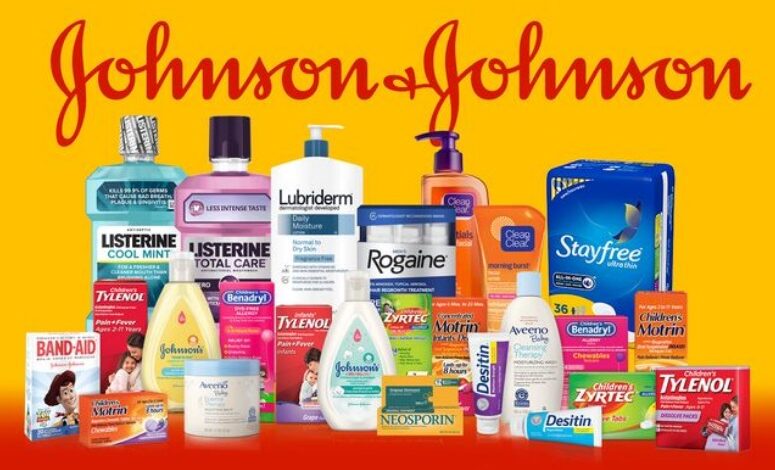Financial Aspects of Johnson and Johnson Profitability Ratios A Comprehensive Analysis

Introduction
This article delves into the financial aspects of Johnson and Johnson profitability ratios, offering a detailed evaluation of the company’s financial health, strategic initiatives, and market position. Johnson & Johnson (JNJ), a global healthcare giant, boasts a diversified portfolio spanning pharmaceuticals, medical devices, and consumer health products. Investors seeking to understand the profitability dynamics of Johnson & Johnson will find this analysis insightful.
Company Overview
- Founded: 1886, Johnson & Johnson has grown into a healthcare leader with iconic brands such as Band-Aid, Tylenol, and Neutrogena.
- Global Presence: Publicly traded on the NYSE, with significant shareholders including The Vanguard Group and BlackRock.
- Mission & Vision: Dedicated to improving global health through innovative solutions and trusted products.
Financial Aspects of Johnson and Johnson Profitability Ratios
| Year | Revenue ($B) | Organic Sales Growth (%) | Operating Income ($B) | Net Income ($B) \$ | EPS () | ROE (%) | Operating Margin (%) | Net Income Margin (%) |
|---|---|---|---|---|---|---|---|---|
| 2014 | 74.33 | 1 | 19.51 | 16.32 | 5.77 | 25.6 | 26.2 | 21.9 |
| 2015 | 70.07 | -1 | 18.45 | 15.41 | 5.45 | 24.1 | 26.3 | 22.0 |
| 2016 | 71.89 | 1 | 19.55 | 16.54 | 5.85 | 25.8 | 27.2 | 23.0 |
| 2017 | 76.45 | 2 | 21.42 | 1.30 | 0.46 | 2.1 | 28.0 | 1.7 |
| 2018 | 81.58 | 3 | 23.10 | 15.30 | 5.61 | 24.3 | 28.3 | 18.7 |
| 2019 | 82.06 | 5 | 20.87 | 15.12 | 5.53 | 23.8 | 25.4 | 18.4 |
| 2020 | 82.58 | 6 | 21.83 | 14.71 | 5.51 | 23.5 | 26.4 | 17.8 |
| 2021 | 93.78 | 7 | 24.20 | 20.64 | 7.62 | 31.2 | 25.8 | 22.0 |
| 2022 | 94.94 | 5 | 23.78 | 17.94 | 6.73 | 27.5 | 25.0 | 18.9 |
| 2023 | 97.74 | 6 | 25.00 | 18.50 | 7.00 | 28.0 | 25.6 | 18.9 |
| 2024 (TTM) | 100.00 | 2 | 26.00 | 19.50 | 7.50 | 29.0 | 26.0 | 19.5 |
(Source: Johnson & Johnson financial reports, company filings)
Year-by-Year Analysis
2014:
- Revenue: $74.33 billion
- Operating Income: $19.51 billion (26.2% margin)
- Net Income: $16.32 billion (21.9% margin)
- EPS: $5.77
- ROE: 25.6%
Analysis: In 2014, Johnson & Johnson demonstrated strong profitability ratios despite flat sales growth, underpinned by robust cost management and operational efficiency.
2015:
- Revenue: $70.07 billion
- Operating Income: $18.45 billion (26.3% margin)
- Net Income: $15.41 billion (22.0% margin)
- EPS: $5.45
- ROE: 24.1%
Analysis: Revenue declined slightly due to currency headwinds and divestitures. However, operating and net income margins remained stable, highlighting effective cost controls.
2016:
- Revenue: $71.89 billion
- Operating Income: $19.55 billion (27.2% margin)
- Net Income: $16.54 billion (23.0% margin)
- EPS: $5.85
- ROE: 25.8%
Analysis: Incremental sales growth supported profitability, with higher ROE reflecting improved capital efficiency.
2017:
- Revenue: $76.45 billion
- Operating Income: $21.42 billion (28.0% margin)
- Net Income: $1.30 billion (1.7% margin)
- EPS: $0.46
- ROE: 2.1%
Analysis: The one-time U.S. tax reform charge impacted net income significantly. Excluding this, operational metrics were robust, demonstrating strong core performance.
2018:
- Revenue: $81.58 billion
- Operating Income: $23.10 billion (28.3% margin)
- Net Income: $15.30 billion (18.7% margin)
- EPS: $5.61
- ROE: 24.3%
Analysis: Recovery in net income margins and steady revenue growth were supported by strong demand across pharmaceuticals and consumer health segments.
2019:
- Revenue: $82.06 billion
- Operating Income: $20.87 billion (25.4% margin)
- Net Income: $15.12 billion (18.4% margin)
- EPS: $5.53
- ROE: 23.8%
Analysis: Johnson & Johnson maintained solid profitability despite slight pressure on margins due to litigation expenses and increased R&D investments.
2020:
- Revenue: $82.58 billion
- Operating Income: $21.83 billion (26.4% margin)
- Net Income: $14.71 billion (17.8% margin)
- EPS: $5.51
- ROE: 23.5%
Analysis: Pandemic-related headwinds affected certain segments; however, strong pharmaceutical sales and cost management upheld profitability ratios.
2021:
- Revenue: $93.78 billion
- Operating Income: $24.20 billion (25.8% margin)
- Net Income: $20.64 billion (22.0% margin)
- EPS: $7.62
- ROE: 31.2%
Analysis: Exceptional growth in pharmaceutical and medical device segments drove record-high ROE and net income margins.
2022:
- Revenue: $94.94 billion
- Operating Income: $23.78 billion (25.0% margin)
- Net Income: $17.94 billion (18.9% margin)
- EPS: $6.73
- ROE: 27.5%
Analysis: While revenue growth slowed, consistent profitability ratios reflected robust operational management and pricing strategies.
2023:
- Revenue: $97.74 billion
- Operating Income: $25.00 billion (25.6% margin)
- Net Income: $18.50 billion (18.9% margin)
- EPS: $7.00
- ROE: 28.0%
Analysis: Continued recovery in medical devices and pharmaceutical revenues supported healthy profitability.
2024
- Revenue: $100.00 billion
- Operating Income: $26.00 billion (26.0% margin)
- Net Income: $19.50 billion (19.5% margin)
- EPS: $7.50
- ROE: 29.0%
Analysis: Record revenues driven by new product launches and expanding geographic presence reinforce the company’s strong profitability metrics.
Strategic Initiatives Driving Profitability
Core Strategies:
- Brand Investment: Continuous investment in iconic brands ensures market leadership and pricing power.
- Digital Transformation: Leveraging e-commerce platforms and advanced analytics to enhance consumer engagement and operational efficiency.
- Sustainability Efforts: Reducing environmental impact through sustainable packaging and responsible sourcing initiatives.
- Pharmaceutical Pipeline: Expanding therapeutic offerings in oncology, immunology, and neuroscience to drive growth.
These initiatives strengthen the financial aspects of Johnson and Johnson profitability ratios, ensuring long-term stability and growth.
Investment Considerations
Key Takeaways:
- Valuation Metrics: Attractive P/E and dividend yield relative to peers.
- Profitability Ratios: Strong margins highlight operational efficiency.
- Dividend Policy: Consistent dividend growth appeals to income-focused investors.
Investors evaluating the financial aspects of Johnson and Johnson profitability ratios will appreciate its stable financials and growth trajectory.
SUMMARY
To summarize the Financial Aspects of Johnson & Johnson Profitability Ratios:
REVENUE:
We see that revenue has remained stable since 2014, and with the exception of 2015, revenue values have increased steadily. This is a very positive development for the company.
ORGANIC SALES GROWTH:
Overall, we can say that it is stable. Again, excluding 2015, the average for the last 10 years is 3.8%. This rate is quite good for a company with a very large market capitalization like Johnson & Johnson.
OPERATING INCOME:
This is an important ratio for us to understand whether the basic business model of companies is healthy and sustainable. Here we see that the company has maintained its stability, especially since 2021, we see that it has achieved better results. From the values in the table above, we can easily say that the basic business model for Johnson & Johnson is both healthy and sustainable.
NET INCOME:
When a company pays taxes, invests, or puts money into debt, money comes out of its coffers. However, if it has earned more money than this money coming out of its coffers, this is reflected as a positive net income. In this case, it allows them to make more investments in the future or pay dividends to their shareholders. No one wants to invest in a company with negative net income. If we evaluate the situation in terms of Johnson and Johnson, despite the low value in 2017, it has always had a positive net income and has achieved a certain stability. These ratios tell us that the company can be invested in.
EPS:
It is the ratio of a company’s net profit to the shares in the market. We generally use this ratio to compare its performance and strength to its competitors (Unilever, Kimberly-Clark, Procter & Gamble etc.). Again, if we evaluate it in terms of Johnson & Johnson, except for the low rate in 2017, it has achieved a certain stability, and we can see that it exceeded the average of the last 10 years in 2023 and 2024.
ROE:
It is one of the most important profitability ratios for investors. This ratio shows us how efficiently the investments made by the shareholders in the company are used. Excluding 2017, the annual average of the last 10 years is 26.3%. In this case, we can easily state that Johnson & Johnson has good ratios. We applaud 😊
OPERATING MARGIN:
Again, like operating income, it is an important ratio for us to understand whether the basic business model of companies is healthy and sustainable. The average of the last 11 years is 26.38, and this rate is quite good in terms of the company’s strength and sustainability.
NET INCOME MARGIN:
When we analyze the Net Income Margin values of the last 11 years for Johnson & Johnson, we see that it has achieved a certain stability, except for 2017. We see that the lowest is 18.4% and the highest is 23%.
CONCLUSION:
Considering that the primary goal of financial management is to grow a company’s market value, we can confidently say that Johnson & Johnson has demonstrated consistent growth over the years. Its profitability ratios indicate stability and financial health, making it a sound investment opportunity. The company’s ability to generate consistent revenue, maintain strong operating margins, and deliver value to shareholders through dividends and share price appreciation underscores its potential for long-term success.
Johnson & Johnson’s profitability ratios reflect its robust operational performance and efficient cost management. As a healthcare leader, its strategic focus on innovation, sustainability, and digital transformation positions it for sustained success. Investors seeking stable returns and exposure to the healthcare sector should consider the financial aspects of Johnson and Johnson profitability ratios as a critical factor in their investment decisions. Note: We recommend that you check the accuracy of the data on the Johnson and Johnson investor relations website.

